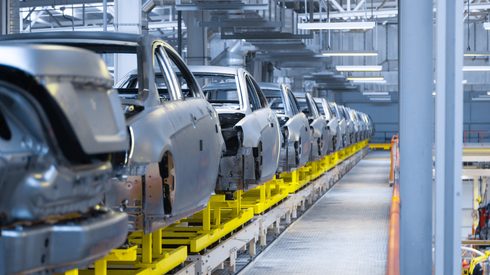The benchmark Fastmarkets 62% Fe iron ore index hit a 16-month low of $92.98 per tonne on September 20, down 61% from its May 12 2021 record high of $237.57, and 58% down from $222.09 on July 15. For context, the last time iron ore prices fell by this magnitude over such a short space of time was during the 2008 global financial crisis, when the index dropped by 68% over three months.
Learn more about the plummeting price of iron ore and the potential impact on steel production margins at this year’s Middle East Iron and Steel conference 2021.
The drivers
The primary driver behind iron ore’s rapid price collapse has been the steel production curbs imposed by the Chinese government in an effort to avoid crude steel output in 2021 exceeding 2020’s record level of 1.053 billion tonnes. Considering the country was churning out steel at a rate of around 12% higher during the first half of 2021, the cutback in the second half was always going to be severe. To many, apparently, it seemed unthinkably severe. Whether or not this goal is reached, it’s clear that most market participants had been underestimating the Chinese government’s resolve to prioritize environmental targets, even at the expense of growth.
Fastmarkets MB 62% fe iron ore index, cfr Qingdao, $ per tonne
The financial woes of Chinese real estate giant Evergrande may also have contributed to the bearish sentiment in the industrial materials that feed the country’s property sector, though the fundamentals were already working against iron ore before this story hit the headlines. While coincident with iron ore’s price crash, I do not believe it to be a particularly causal factor, and probably more of a red herring. It does of course have the potential to become a herring of a different color though (or just not a fish of any sort) if its issues precipitate a more structural malaise in China’s property sector, which accounts for some 30-35% of the country’s steel consumption.
Meanwhile global iron ore production continues to spring back from a multi-year period of one-after-another supply issues, and some steel mills were heard to be re-selling unneeded contracted material on the spot market in recent weeks. Just this month, however, Vale announced that permitting issues had dampened its capacity growth ambitions for next year, reminding us that it may not be all smooth sailing from a supply perspective.
Despite the overall market drop, prices for higher grades remain more resilient. Lower grade products on the other hand are suffering. The 62% Fe index was last around $90/t in May of 2020. The 65% Fe index by contrast remains some $10/t higher that it was at that same point, while the 58% Fe index is nearly $10/t lower. The persisting appetite for higher-grade products owes largely to two factors: 1) Record high coke prices, and 2) Still-healthy steelmaker profit margins. Being unable to raise productivity due to imposed output curbs, mills with multiple blast furnaces are understood to be reacting to these conditions by idling one or two furnaces, whilst running their remaining capacity at high productivity.
Prices for higher grades have remained more resilient during the sell-off
Putting it in context
I’ve been involved in pricing iron ore since 2013 and well recall the grinding bear market of 2014 and 2015. I’d note how different conditions feel today versus then. By the end of 2015, the steel industry was suffering from chronic overcapacity and many mills (both in China and worldwide) were operating at negative margins. Iron ore supply had been ramping up for several years, but it was the structural weakness in the steel sector that made the outlook appear particularly bleak. Today, by artificially curbing steel output despite strong mill margins, China’s intervention should mean that steelmaker businesses remain in good health unless there is an equally meaningful drop in downstream steel demand. Counter-intuitively, therefore, the policies that have brought about this sharp correction may actually turn out to be constructive for raw materials prices over a longer-term horizon.
What next?
My analyst colleagues at Fastmarkets’ research department had been predicting a substantial drop in iron ore prices since much earlier in the year, although admit that the fall was quicker and sharper than expected. In their weekly steel raw materials tracker they note that in their view the recent move to $92/t may be something of an overcorrection however, and that the potential exists for a modest recovery in the coming weeks.
For my part I can’t, and wouldn’t particularly want to speculate on what iron ore prices may do next. But I do find it interesting to observe how the subjective experience of seeing iron ore at $100 per tonne varies greatly depending on which direction you have come to there from. Needless to say, this price level is still considerably higher than the average of the past decade, and multiples of the cash costs of production for the biggest producers. Something to watch out for though is how much the costs of the marginal producers may have increased in recent years, and are likely to continue increasing into the future on the back of more stringent global ESG requirements and rising consumables prices. In other words, don’t be too surprised if cost curve pressure starts to be felt at higher price levels going forward than it perhaps has historically.
In the near term, one unexpected factor that could potentially provide some support for iron ore prices may be China’s current power shortage, which is impacting steel output from electric arc furnaces and semis re-rollers. Although production from these segments only accounts for a small fraction of China’s overall steel industry, any further reduction may nevertheless provide a slight lift to the output requirements from integrated mills.




